 The Piazza della Signoria was the heart of the Republic of Florence. When Charles VIII of France invaded Florence in 1494, Piero the Unfortunate and the rest of the ruling Medici family were forced into exile. For the next several years, an ultraconservative Dominican friar & prophet named Girolamo Savonarola ruled the Republic. His moralistic reforms—like replacing Carnival with the infamous “bonfire of the vanities” in this very piazza—eventually came to an end when he refused to join Pope Alexander VI‘s Holy League and was excommunicated. On 23 May 1498, Savonarola and two other Dominicans were condemned, hanged, & burned in the piazza.
The Piazza della Signoria was the heart of the Republic of Florence. When Charles VIII of France invaded Florence in 1494, Piero the Unfortunate and the rest of the ruling Medici family were forced into exile. For the next several years, an ultraconservative Dominican friar & prophet named Girolamo Savonarola ruled the Republic. His moralistic reforms—like replacing Carnival with the infamous “bonfire of the vanities” in this very piazza—eventually came to an end when he refused to join Pope Alexander VI‘s Holy League and was excommunicated. On 23 May 1498, Savonarola and two other Dominicans were condemned, hanged, & burned in the piazza.
Niccolò Machiavelli, then only in his late twenties, witnessed the execution. Just two months later, he was appointed the second chancery and faithfully served the Republic until the House of Medici returned to power in 1512. He was imprisonment & torture the next year. Ostracized, Machiavelli retired to his farm in nearby Sant’Andrea in Percussina where he wrote The Prince in the futile hope of winning the favor of Lorenzo di Piero de’ Medici.
In 1565, the Fountain of Neptune was commissioned by Cosimo I de’ Medici (from a different branch of the Medicis.) Neptune’s face is supposedly modeled on the Duke’s.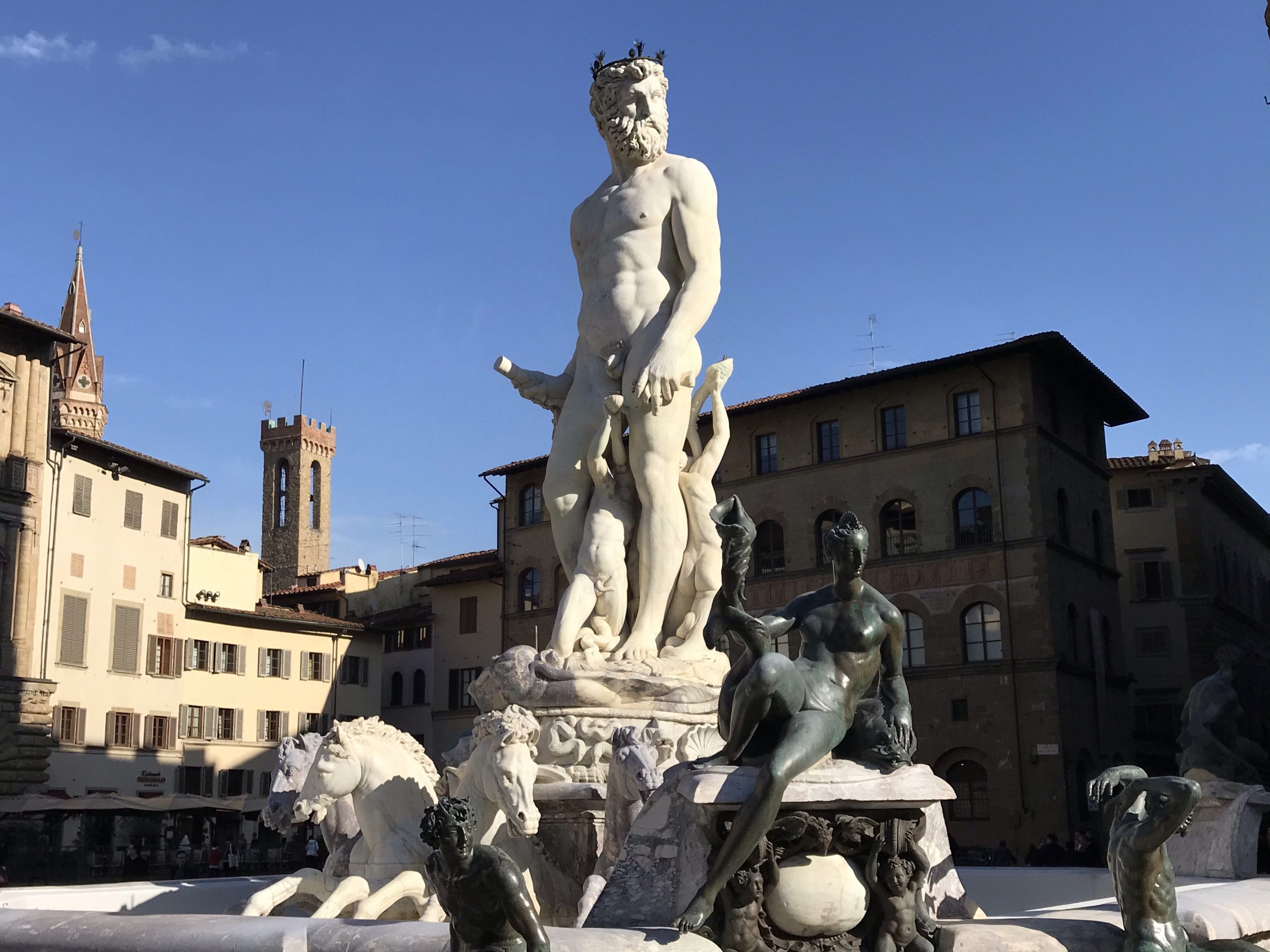 This Roman-style Equestrian Monument of Cosimo I was commissioned by Cosimo’s son, Ferdinando I.
This Roman-style Equestrian Monument of Cosimo I was commissioned by Cosimo’s son, Ferdinando I.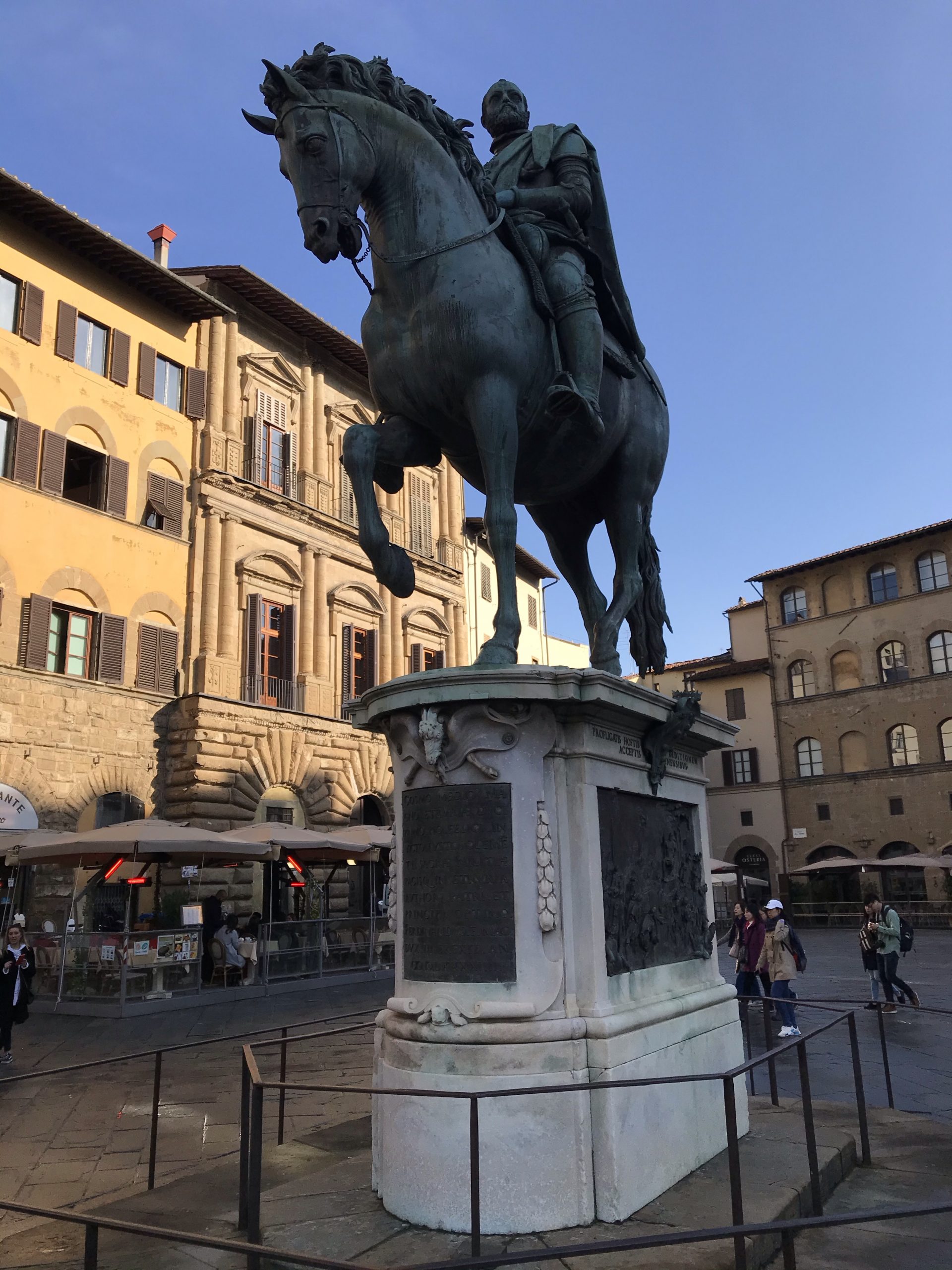 Florence’s “town hall” is the the Palazzo Vechio. As seen here from down the street by the Piazzale degli Uffiz, the “Old Palace” literally towers over the piazza.
Florence’s “town hall” is the the Palazzo Vechio. As seen here from down the street by the Piazzale degli Uffiz, the “Old Palace” literally towers over the piazza. After its unveiling in 1505, Michelangelo’s David stood to one side of the palace’s entrance (until 1873 when it was moved to Galleria dell’Accademia and replaced with a replica.) On the other side of the entrance stands Baccio Bandinelli‘s statue of Hercules & Cacus (the giant, fire-breathing son of Vulcan.)
After its unveiling in 1505, Michelangelo’s David stood to one side of the palace’s entrance (until 1873 when it was moved to Galleria dell’Accademia and replaced with a replica.) On the other side of the entrance stands Baccio Bandinelli‘s statue of Hercules & Cacus (the giant, fire-breathing son of Vulcan.)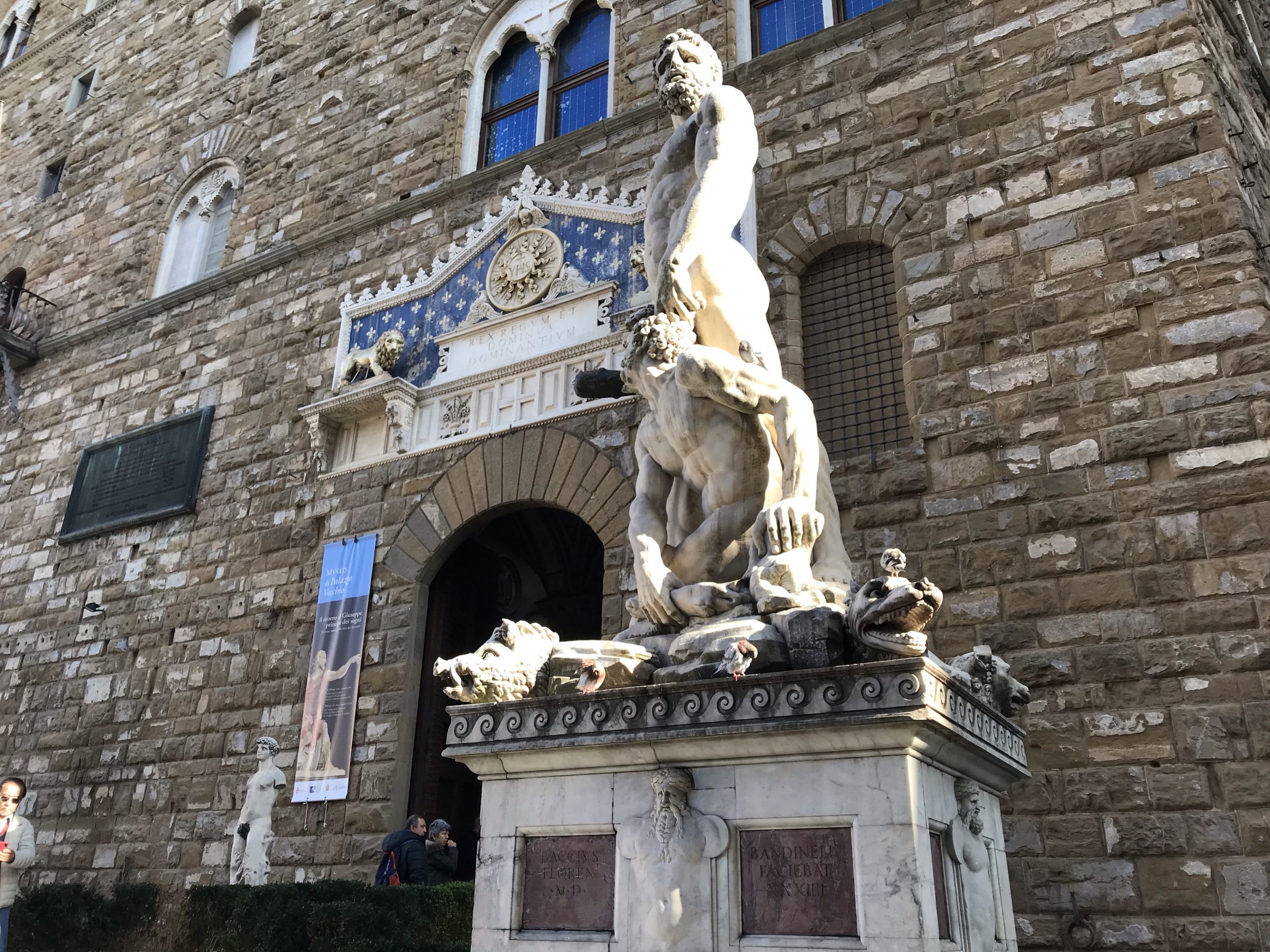 The Loggia dei Lanzi is a covered pavilion with a high arched ceiling showcasing statues like Perseus with the Head of Medusa…
The Loggia dei Lanzi is a covered pavilion with a high arched ceiling showcasing statues like Perseus with the Head of Medusa…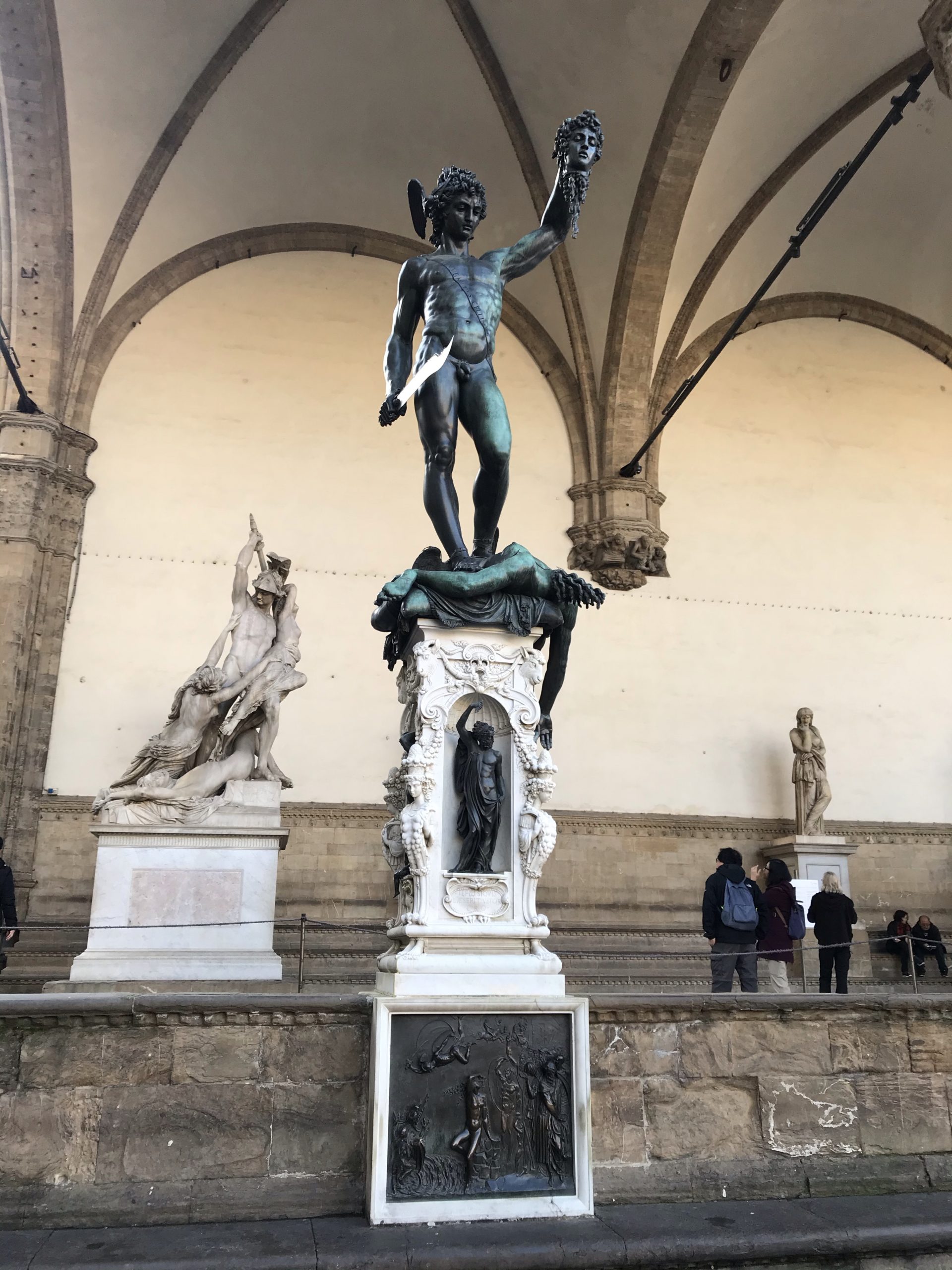 …and The Rape of the Sabine Women.
…and The Rape of the Sabine Women. A few steps away from the loggia is a delightful bronze boar fountain nicknamed Il Porcellino (Italian for “piglet”). Tradition has it that rubbing his snout with ensure that you return to Florence someday.
A few steps away from the loggia is a delightful bronze boar fountain nicknamed Il Porcellino (Italian for “piglet”). Tradition has it that rubbing his snout with ensure that you return to Florence someday. 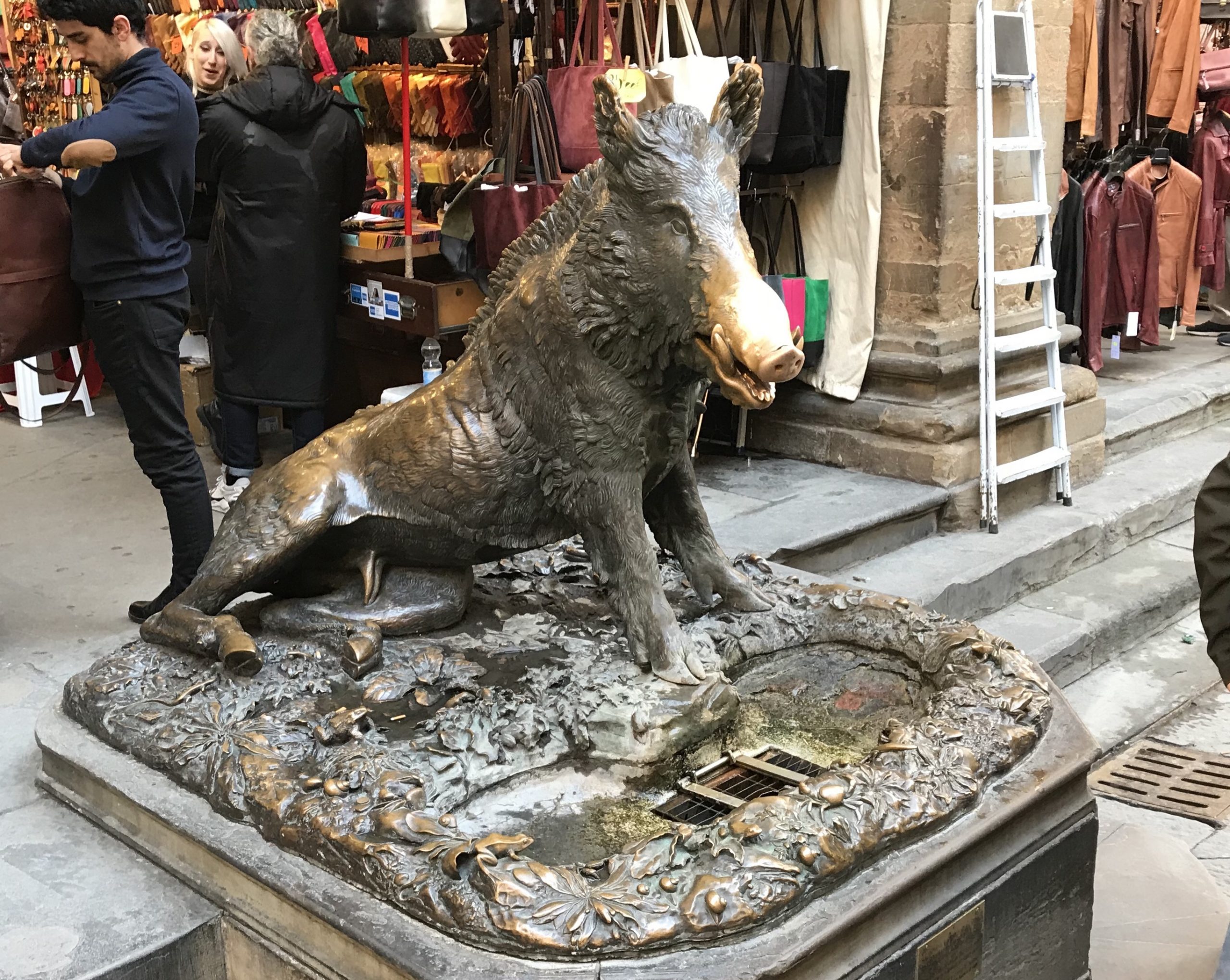

Pingback: Vanità II | Words Fail Me